parallel evolution
Investigating the genetic component of large body size evolution in the Anolis sagrei clade
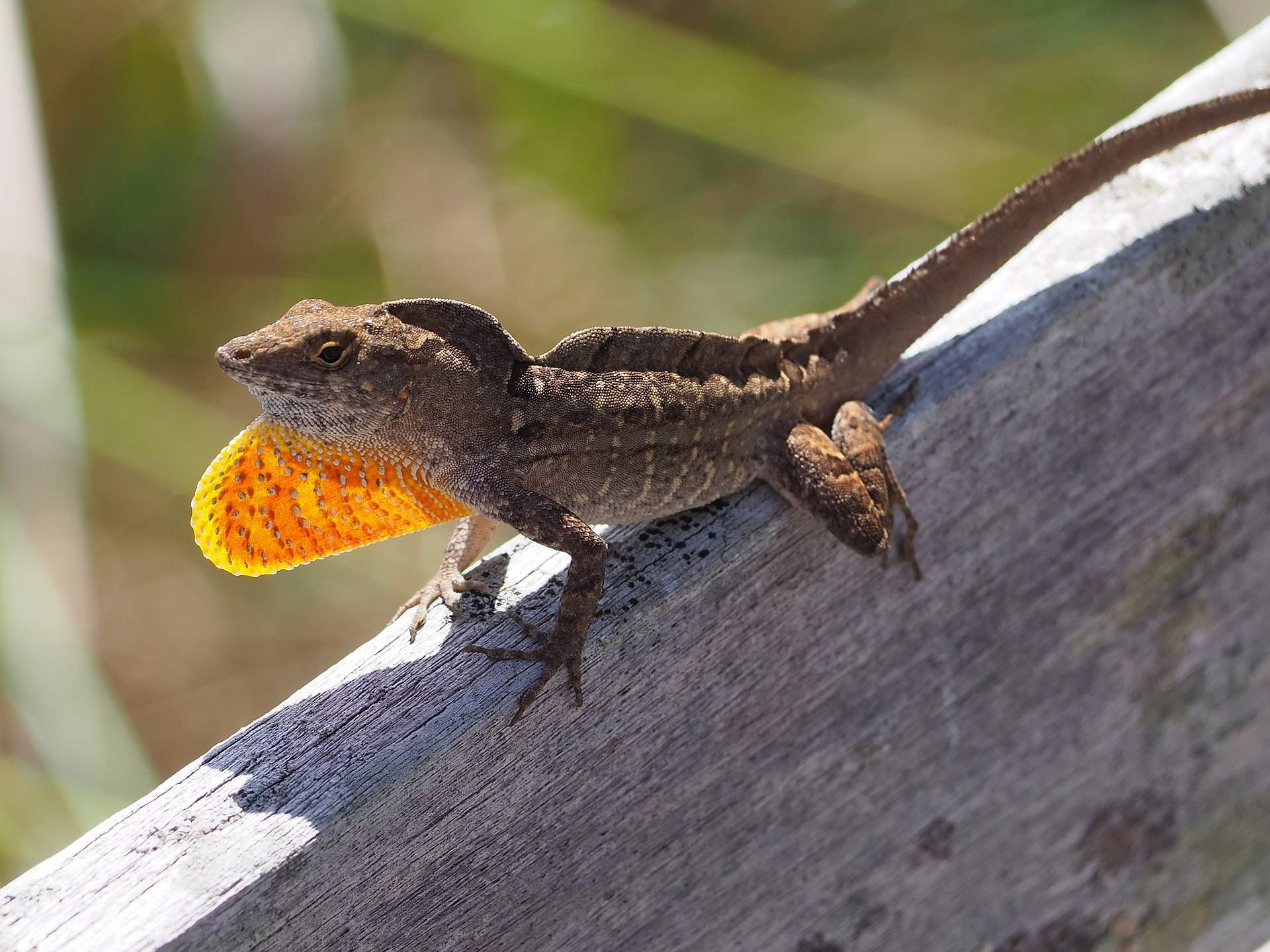
Anoles are well-known for their ability to convergently evolve to similar environments, e.g. anoles in the Greater Antilles have adapted to similar micro-habitats and have been placed into “ecomorph” classes describing their behavior, habitat use, and morphology. Insular anole species are known to have far fewer competitors than their mainland counterparts, and display higher population densities and broader niches because of ecological release1. Anolis sagrei is a trunk-ground anole, which means it is a medium-sized stocky species with long hindlimbs and poorly-developed toepads. They are usually found around 1-1.5 meters above the ground on the tree trunk2. While most species within this clade conform to this phenotype, some have evolved significant differences in morphology and habitat use. Anolis s. nelsoni from the Swan islands and Anolis s. luteosignifer from Cayman Brac both occur on islands without competitors and have evolved these phenotypic differences due to ecological release.
Previous research has shown that both A. s. nelsoni and A. s. luteosignifer use perch heights that would usually be occupied by competing Anolis species on species-rich islands1. The increase in perch height by these anoles was correlated with an increase in mean toe lamellae number. Lamellae are adaptively important for anoles as they allow the lizards to adhere to branches and leaves better. This increase in lamellae number presumably allows these A. sagrei subspecies to expand their niche space upwards into the tree3. Since these solitary A. sagrei subspecies are now able to occupy habitat spaces usually unavailable to them, they also show a greater range of thermal niche space compared to A. sagrei species that co-occur with other anoles1.
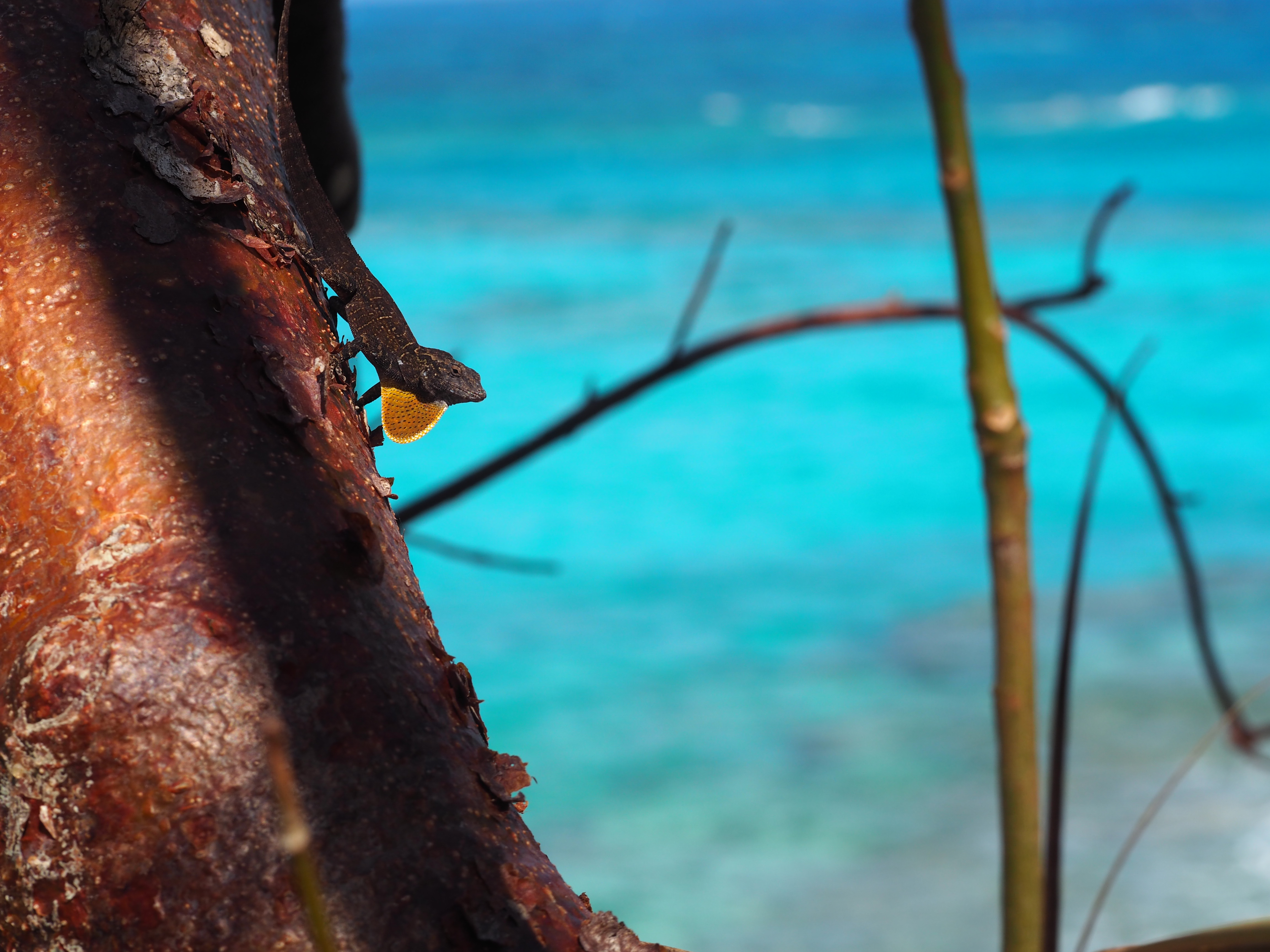
In addition to expanded niche spaces, these solitary Anolis species show significant differences in morphology as well. In a comparison between solitary anole species and those occurring with competitors, it was shown that solitary anoles have convergently evolved to have an optimal intermediate head length. These solitary species show significantly less variation in head length than the anoles occurring in areas with other species3. Also, both A. s. nelsoni and A. s. luteosignifer show an increased degree of sexual dimorphism. Sexual dimorphism in these lizards would allow for more efficient usage of island resources where males and females are eating prey of different sizes and therefore occupying different food niche spaces3. This differentiation between the sexes can be seen in the photo below.
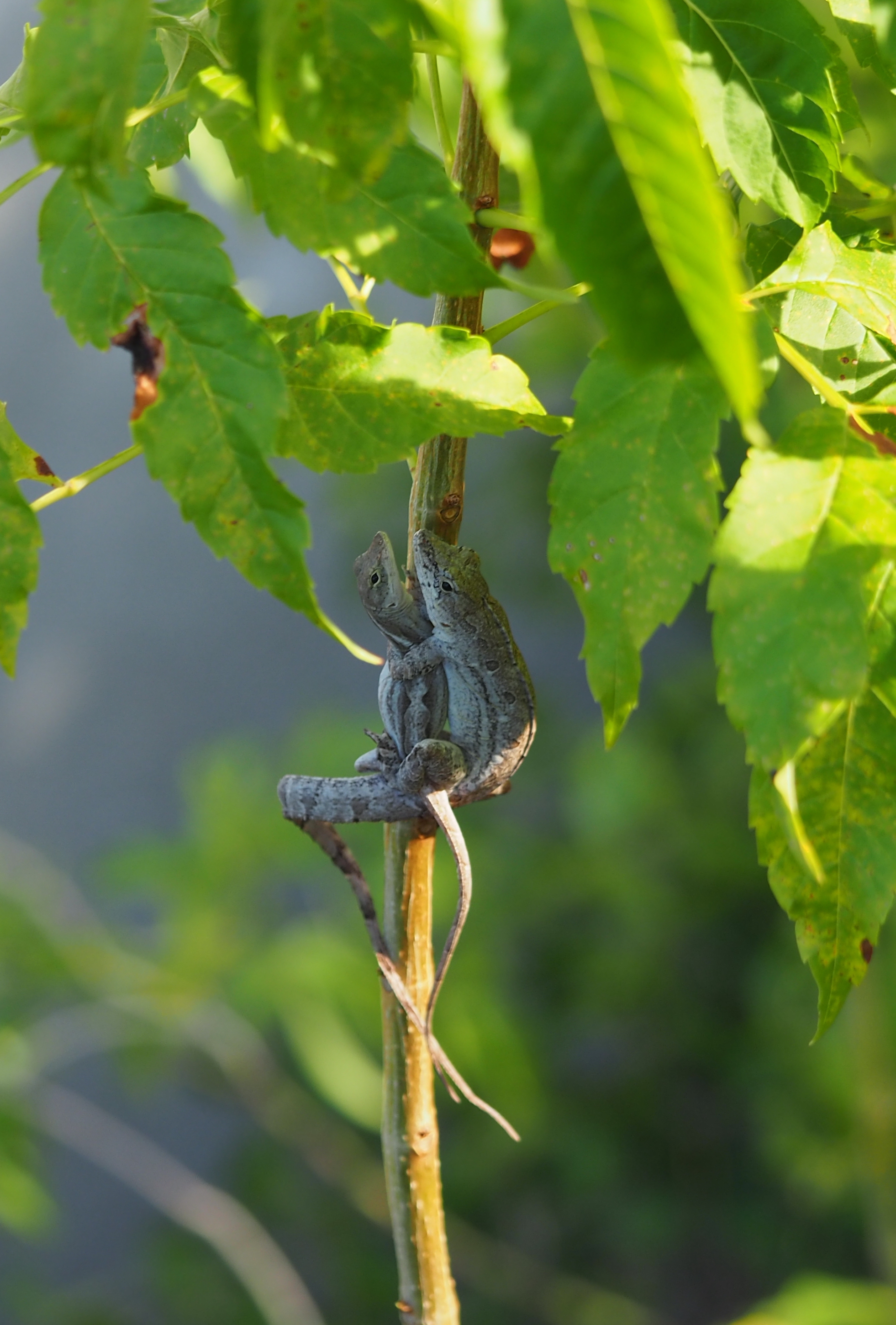
Genetic and morphological data were collected from 6 species of Anolis sagrei occurring on different islands in the Caribbean (Figure 1). The A. sagrei subspecies in this study are A. s. nelsoni, A. s. luteosignifer, A. s. sagrei, A. s. ordinatus, A s. mayensis, and A. s. ophiolepis.
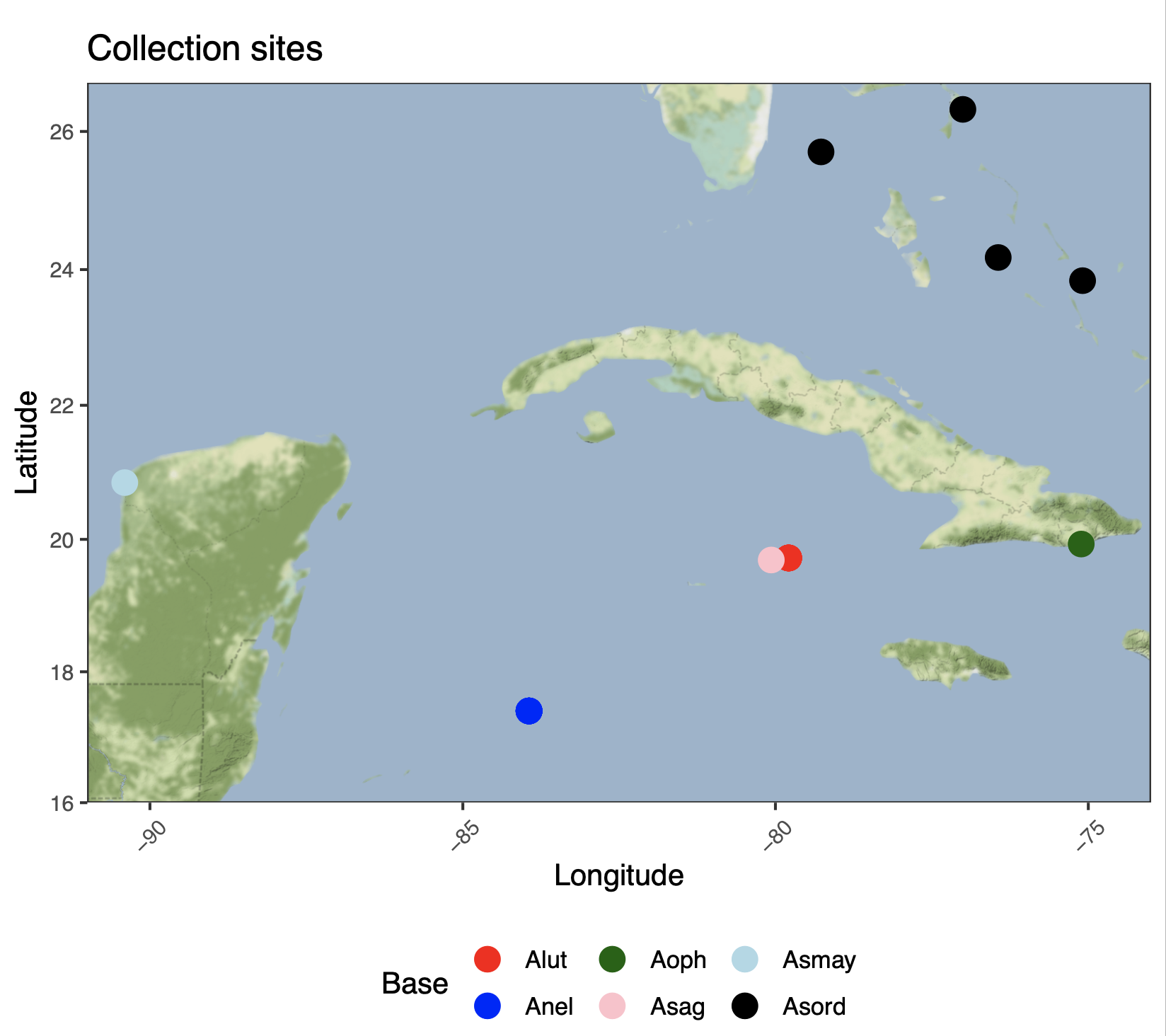
Using the morphological traits collected, we performed a principal components analysis (Figure 2). The PCA shows that A. s. nelsoni and A. s. luteosignifer are more morphologically similar to each other than they are to their closest relatives. A. s. nelsoni is most closely related to A. s. mayensis and A. s. luteosignifer is most closely related to A. s. sagrei. This is indicated below in the comparison of the phylogenetic tree for these subspecies and the euclidian distance plot, which determines which groups are closest to one another in morphospace based on the pca (Figure 3).
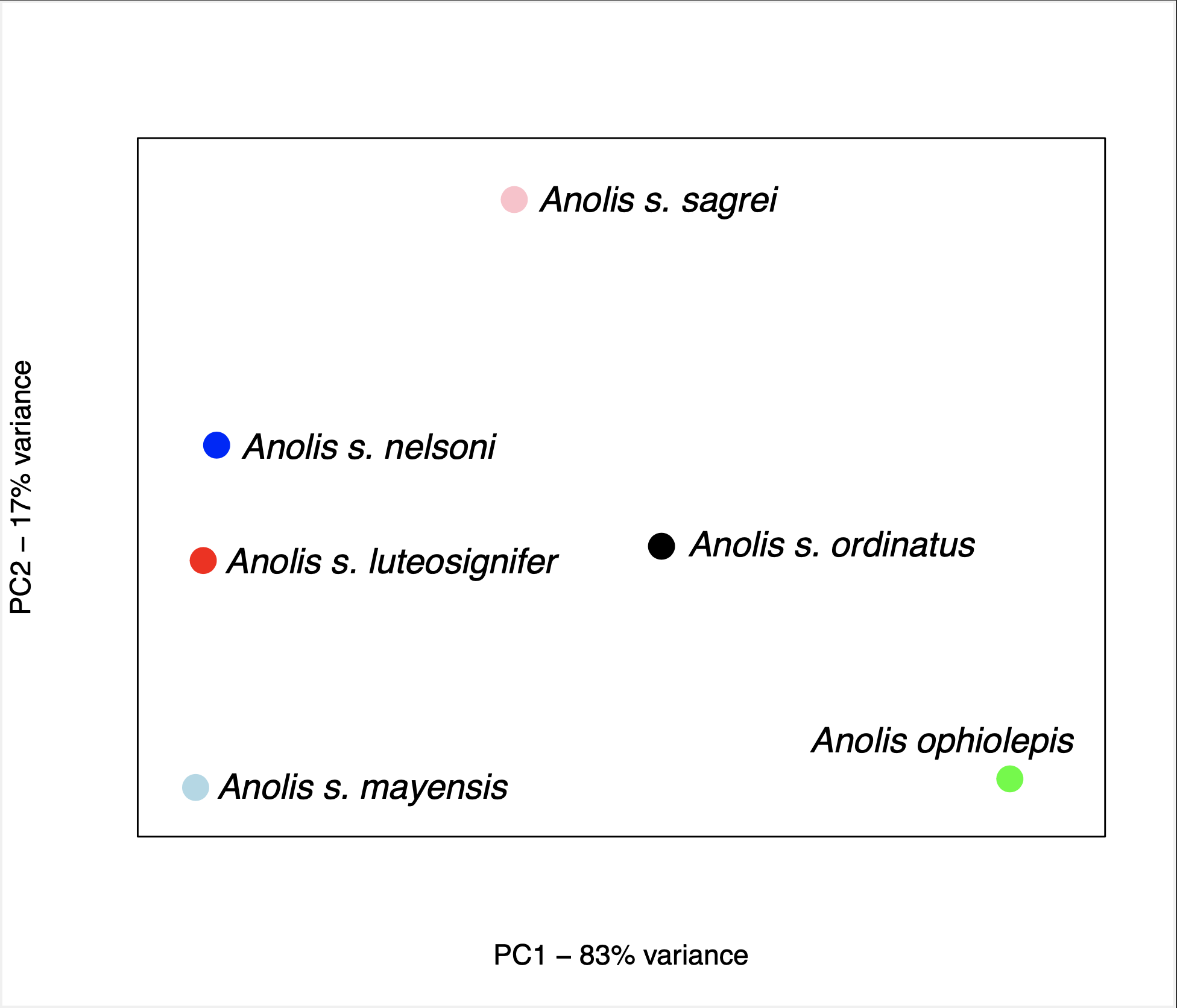
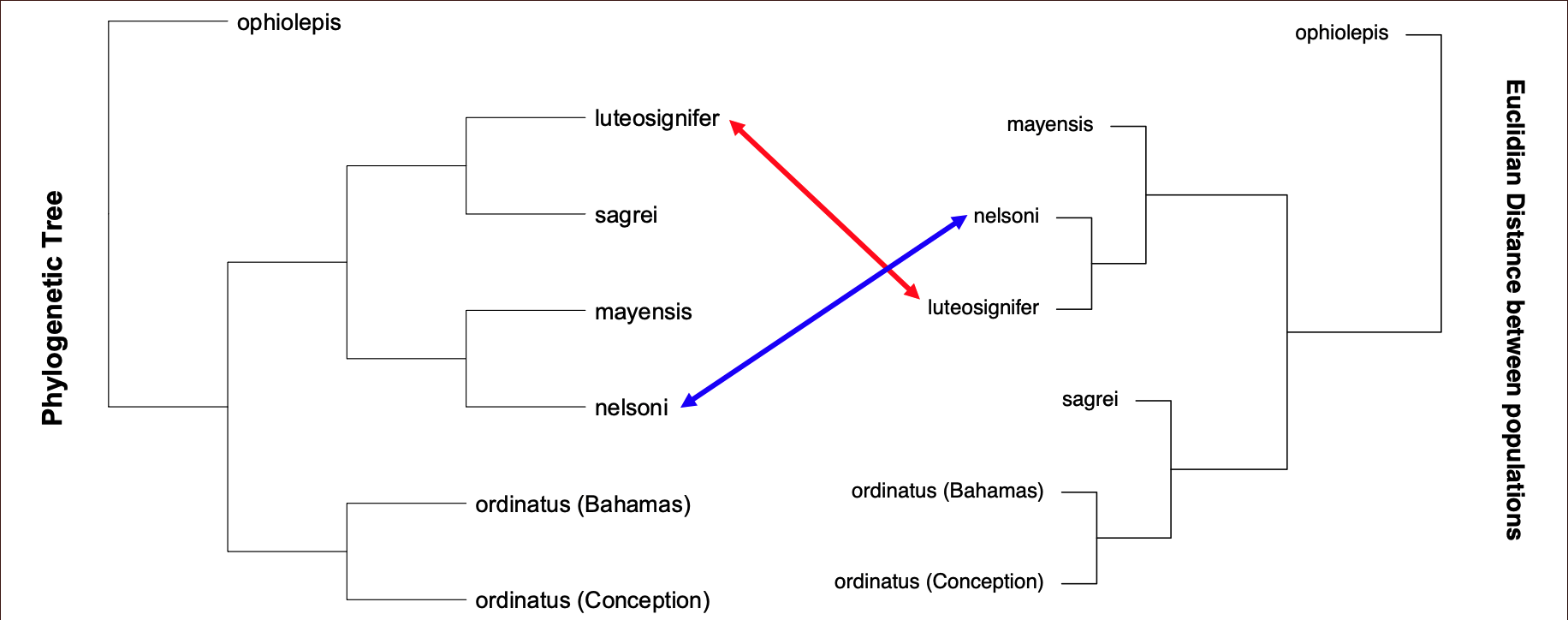
We have performed whole genome resequencing of these lineages to determine whether the same genetic changes underlie the parallel evolution of large body size in A. s. nelsoni and A. s. luteosignifer. We are using these genomic data and a recently published reference genome for A. sagrei to perform population genomic analyses to detect regions experiencing recent and recurrent natural selection in each population and then test whether the same regions have independently evolved in large bodied populations.
References
-
Lister BC. 1976. The Nature of Niche Expansion in West Indian Anolis Lizards I: Ecological Consequences of Reduced Competition. Evolution. 30(4): 659-676. ↩ ↩2 ↩3
-
Losos JB. 2009. Lizards in an Evolutionary Tree: Ecology and Adaptive Radiation of Anoles. Berkeley and Los Angeles (CA): Univeristy of California Press. 507p. ↩
-
Lister BC. 1976. The Nature of Niche Expansion in West Indian Anolis Lizards II: Evolutionary Components. Evolution. 30(4): 677-692. ↩ ↩2 ↩3